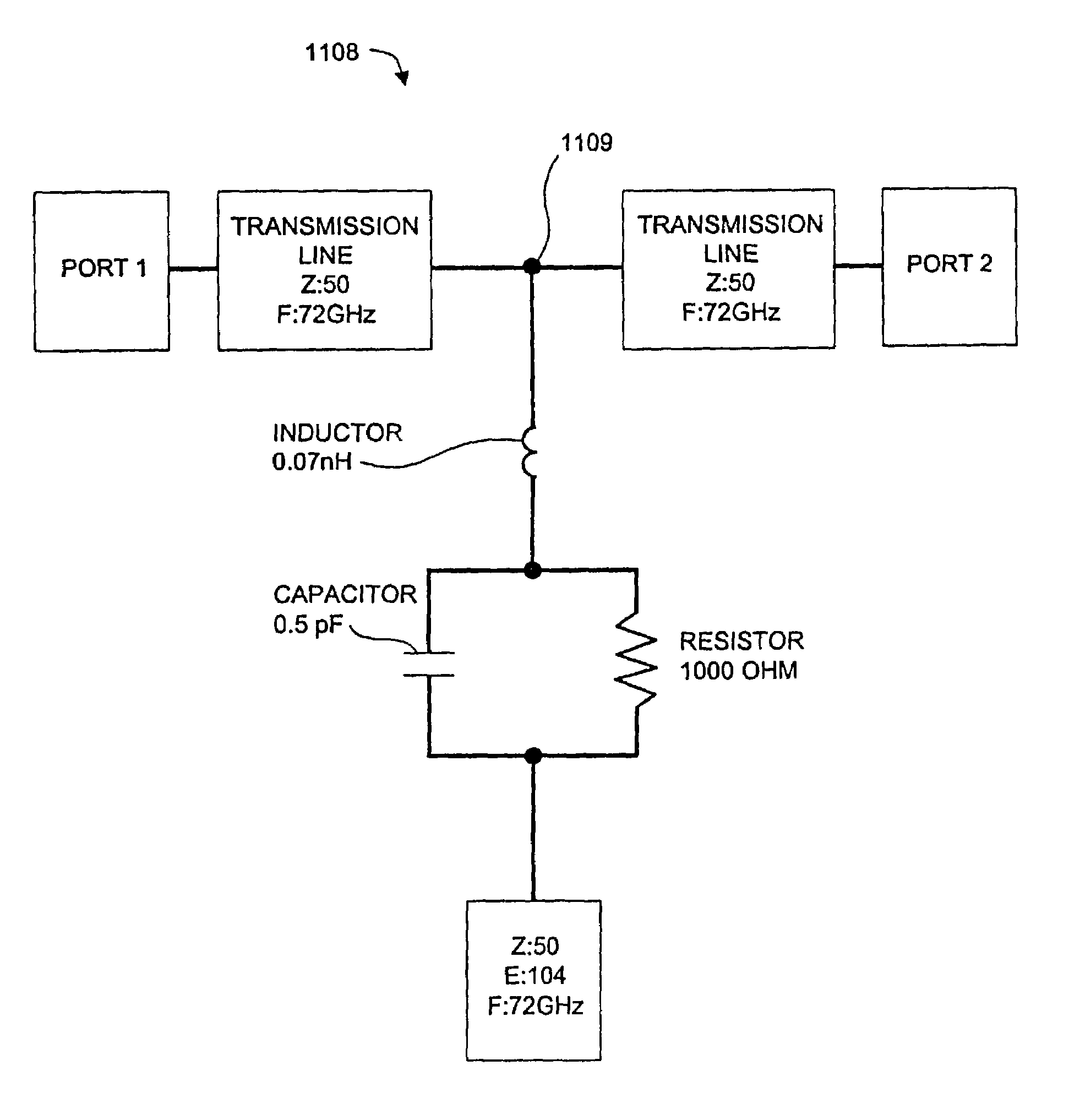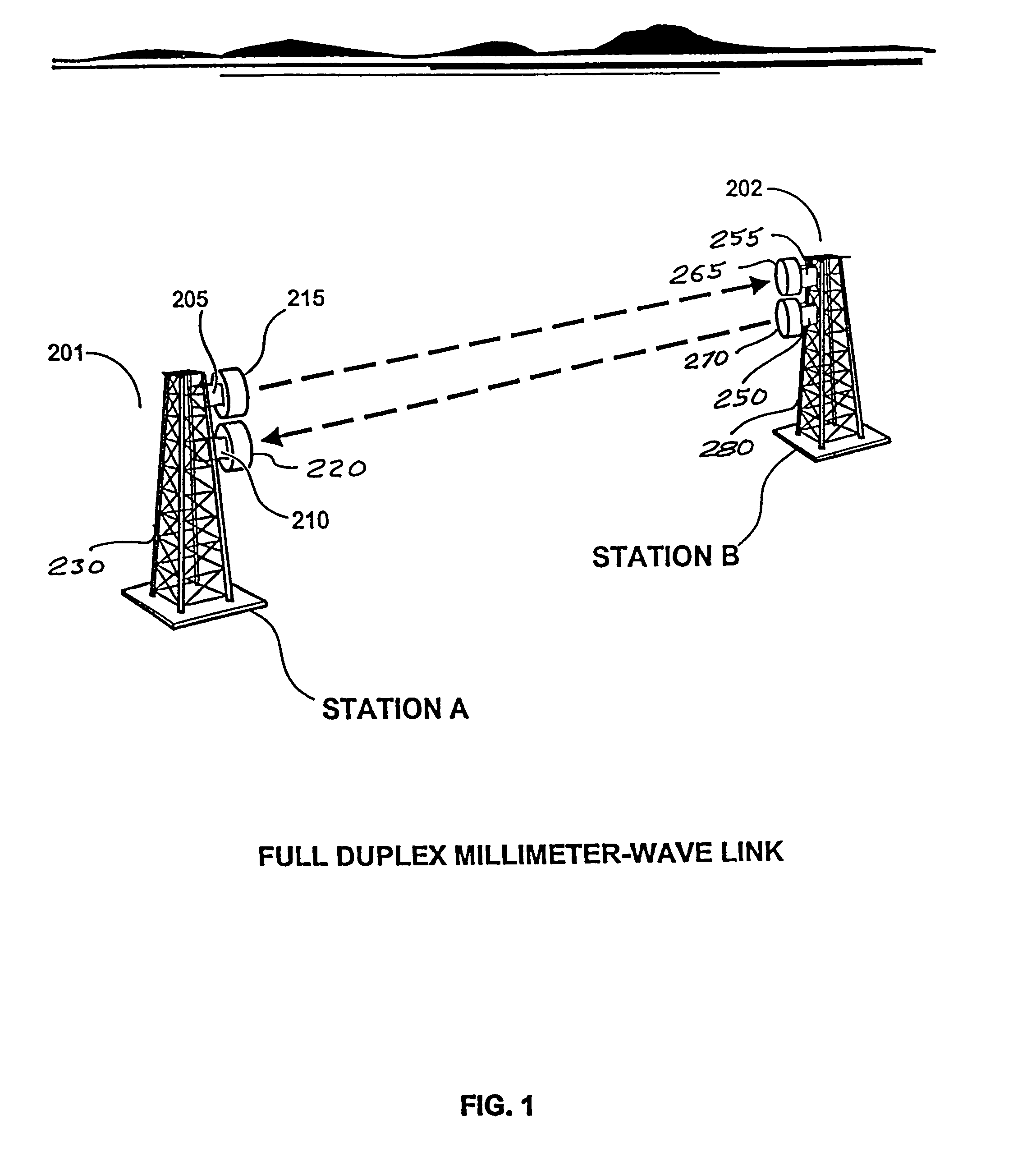Millimeter wave communications system with a high performance modulator circuit
a communication system and modulator circuit technology, applied in the field of millimeter wave communications system with high-performance modulator circuit, can solve the problems of reducing the performance of conventional modulators, affecting the efficiency of communication, and affecting the quality of communication, so as to achieve efficient spatial and directional partitioning and high data rate communication
- Summary
- Abstract
- Description
- Claims
- Application Information
AI Technical Summary
Benefits of technology
Problems solved by technology
Method used
Image
Examples
first preferred embodiment
[0075]In a first preferred embodiment built and tested by Applicants, a millimeter-wave data link is configured to pass Ethernet data packets bi-directionally between the ends of the link. A block diagram of the data link is shown in FIG. 14. A block diagram of the millimeter-wave transceiver used at each end of the link is illustrated in FIG. 15. One end of the link 42 (designated as “Transceiver A”) transmits at 72 GHz and receives at 75 GHz, and the other end 44 (designated as “Transceiver B”) transmits at 75 GHz and receives at 72 GHz. Dish antennas 24 with a diameter of 2 feet and feedhorns 51 are used at each end to achieve a radiated beam width of approximately 0.34 degrees.
[0076]The received signal strength at end A is used to control the power transmitted by link end B. The received signal strength at link end B is used to control the power transmitted by link end A. The signal strength received at A is communicated to end B via the data stream flowing from A to B. The sign...
PUM
 Login to View More
Login to View More Abstract
Description
Claims
Application Information
 Login to View More
Login to View More - R&D
- Intellectual Property
- Life Sciences
- Materials
- Tech Scout
- Unparalleled Data Quality
- Higher Quality Content
- 60% Fewer Hallucinations
Browse by: Latest US Patents, China's latest patents, Technical Efficacy Thesaurus, Application Domain, Technology Topic, Popular Technical Reports.
© 2025 PatSnap. All rights reserved.Legal|Privacy policy|Modern Slavery Act Transparency Statement|Sitemap|About US| Contact US: help@patsnap.com



